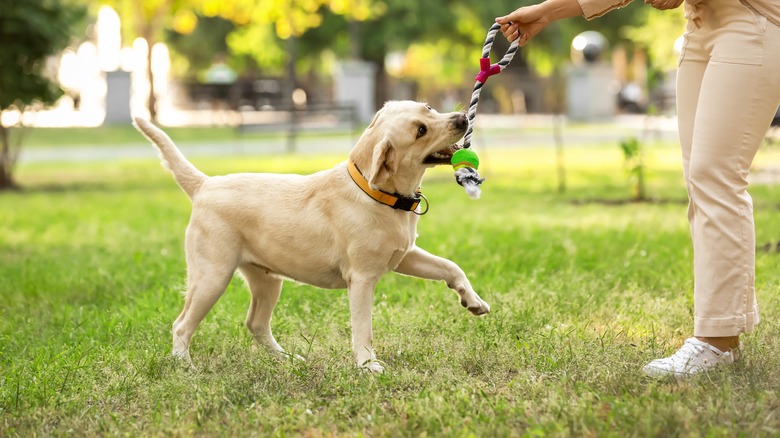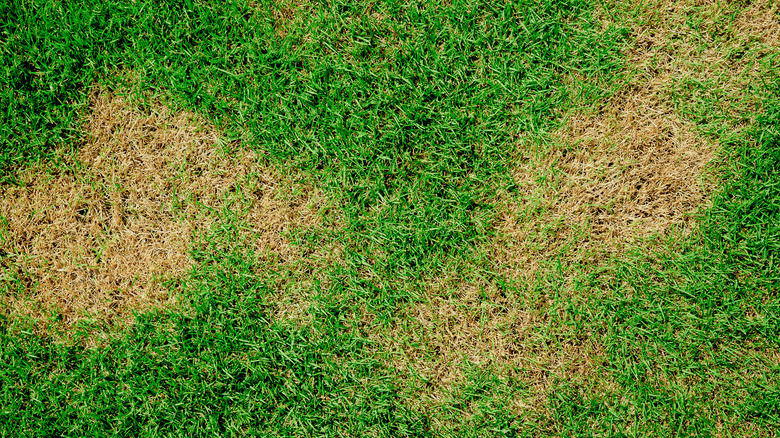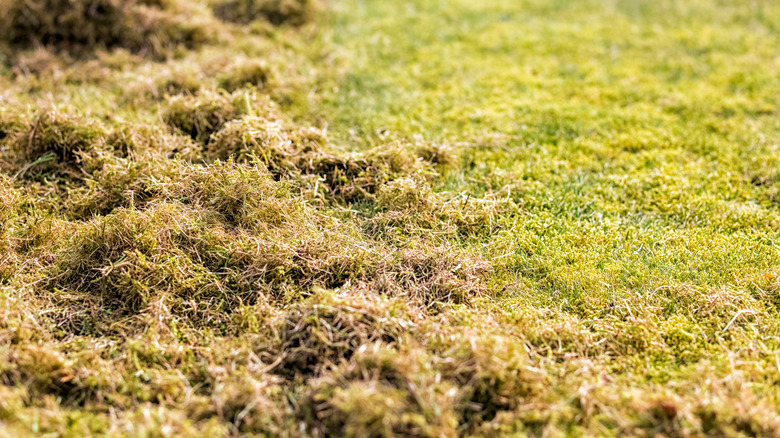Your Dog Could Be To Blame For Your Grass Turning Yellow
If you're a pawrent and let your pup use your lawn to do its business, you might have noticed that certain parts of your once green turf are looking a bit yellow. That's because dog urine contains nitrogen compounds that can burn grass and create these unsightly patches. While a moderate amount of nitrogen can act as a fertilizer for lawns, an excessive concentration in a small area can lead to burns and kill the grass. The concentration of nitrogen depends on factors like your dog's size, gender, and diet. Larger dogs and females tend to cause a little bit more damage because they produce a higher volume of urine and go in more concentrated spots.
Luckily, there are a few ways to deal with these doggy crop circles. The first option is to modify your fur baby's diet. Dog food tends to be high in protein, which unfortunately increases the nitrogen concentration in their urine. Some dog owners have also found success with supplements that can partially neutralize the urine and reduce the damage to your turf. Always check with a veterinarian before starting your dog on something new. However, if you want to put more focus on your lawn and still let Fido have free rein to go where they choose, you can go the simple route and rinse the green to dilute and wash away any excess wee-wee.
Your lawn isn't permanently damaged
Aside from pouring water on the area where your dog does their business, you might want to consider training them to use designated spots that are covered in mulch or gravel. You can also try using a product that reduces the nitrates in your dog's urine. These can be in the form of supplements or drops that are placed in your dog's water. Additionally, make sure that your pup has access to fresh water throughout the day, and encourage them to stay hydrated so that their urine will be less concentrated.
When it comes to lawn care, you can also adjust your mower setting so that the grass ends up shorter. This makes it less vulnerable to burning. For existing burn marks, you might want to consider aerating your lawn. This process stimulates root growth by allowing air, water, and nutrients to penetrate the soil beneath the damaged grass. After aerating, it's recommended that you reseed the area to promote a vibrant and healthy lawn in the future.
There are other reasons your grass might be a bit spotty
Instead of jumping to conclusions and blaming your dog for the damage, it's important to investigate other potential causes. If you notice brown spots surrounded by dark green grass, that pretty much points to dog urine. If you're still unsure, gently tug on the discolored grass and check if the roots are firmly attached. Easily lifted patches mean your lawn is sick, but secure roots means your four legged kid is guilty. Under watering and excessive heat can lead to dehydration and damage. To tackle this, increase the frequency of your watering.
Yellow spots mean excess nitrogen, which means your lawn is being overfertilized. Nitrogen, along with phosphorus and potassium, are essential for a healthy lawn. But an excessive amount of nitrogen can damage your lawn's roots system, cause chemical burns, and disrupt the pH of your soil. If you're currently dealing with an overfertilized lawn, water the affected area so that it will begin to dilute and drain the excess nutrients, and continue watering it on a daily basis for at least a week. If damage has already occurred, promptly water the affected area to drain it and continue daily watering for a week.


